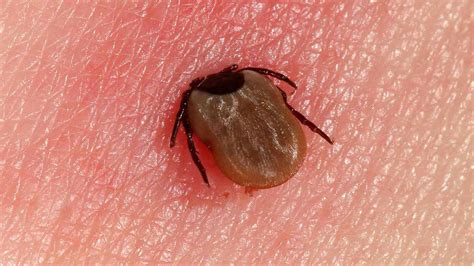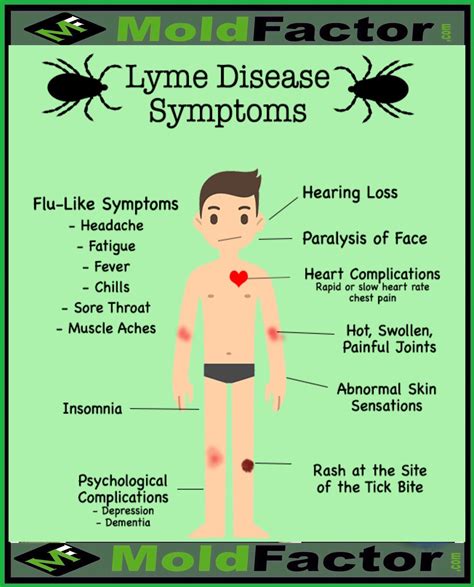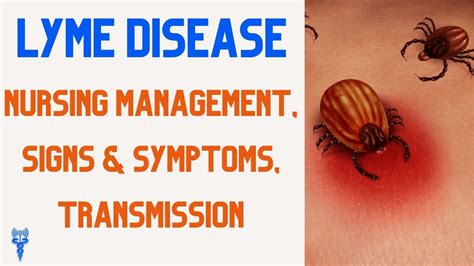Intro
Lyme disease is a complex and often misunderstood condition that affects thousands of people worldwide. It is a bacterial infection caused by Borrelia burgdorferi, which is transmitted to humans through the bite of an infected blacklegged tick. The disease can cause a range of symptoms, from mild to severe, and can affect various parts of the body, including the skin, joints, and nervous system. In this article, we will delve into the world of Lyme disease, exploring its causes, symptoms, diagnosis, treatment, and prevention.
Lyme disease is a significant public health concern, particularly in areas where ticks are common. The disease can have a profound impact on a person's quality of life, causing chronic pain, fatigue, and cognitive impairment. Despite its importance, Lyme disease remains poorly understood, and many people are unaware of the risks and consequences of infection. By educating ourselves about Lyme disease, we can take steps to prevent it and reduce the risk of transmission.
The importance of understanding Lyme disease cannot be overstated. The disease can be difficult to diagnose, and symptoms can be non-specific, making it challenging to identify. Moreover, the consequences of untreated Lyme disease can be severe, leading to long-term health problems and disability. By learning about Lyme disease, we can empower ourselves to take control of our health and well-being. Whether you are a healthcare professional, a patient, or simply someone interested in learning more about the disease, this article aims to provide a comprehensive overview of Lyme disease, its causes, symptoms, diagnosis, treatment, and prevention.
Causes and Risk Factors of Lyme Disease

Several factors can increase the risk of Lyme disease, including:
- Living in an area where ticks are common
- Spending time outdoors, particularly in wooded, bushy, and grassy areas
- Having a job that involves working outdoors, such as landscaping or forestry
- Participating in outdoor activities, such as hiking, camping, or hunting
- Having a pet that spends time outdoors, as pets can bring ticks into the home
Symptoms of Lyme Disease

The early localized stage of Lyme disease is characterized by a distinctive rash, known as erythema migrans, which appears at the site of the tick bite. The rash is usually circular and expands over time, and can be accompanied by flu-like symptoms, such as fever, headache, and fatigue.
The early disseminated stage of Lyme disease occurs when the bacteria spread to other parts of the body, such as the joints, nervous system, and heart. Symptoms can include:
- Joint pain and swelling
- Neurological problems, such as meningitis and encephalitis
- Heart problems, such as abnormal heart rhythms
- Eye problems, such as conjunctivitis and keratitis
The late disseminated stage of Lyme disease occurs when the bacteria have been present in the body for an extended period. Symptoms can include:
- Chronic joint pain and swelling
- Neurological problems, such as cognitive impairment and memory loss
- Heart problems, such as heart failure
- Eye problems, such as vision loss
Diagnosis of Lyme Disease
Diagnosing Lyme disease can be challenging, as the symptoms can be non-specific and similar to those of other conditions. A diagnosis is typically made based on a combination of medical history, physical examination, and laboratory tests.The most commonly used laboratory test for Lyme disease is the enzyme-linked immunosorbent assay (ELISA), which detects the presence of antibodies against the bacteria. However, this test can produce false-negative results, particularly in the early stages of the disease.
Other laboratory tests, such as the Western blot test and the polymerase chain reaction (PCR) test, can also be used to diagnose Lyme disease. These tests can detect the presence of the bacteria or their genetic material in bodily fluids, such as blood and spinal fluid.
Treatment and Management of Lyme Disease

In addition to antibiotics, other treatments may be used to manage the symptoms of Lyme disease, such as:
- Pain relievers, such as acetaminophen and ibuprofen, to reduce joint pain and inflammation
- Anti-inflammatory medications, such as corticosteroids, to reduce swelling and inflammation
- Anticonvulsant medications, such as phenytoin, to manage seizures and other neurological problems
It is essential to seek medical attention if you suspect that you have Lyme disease, as prompt treatment can help to prevent long-term health problems. If left untreated, Lyme disease can lead to chronic health problems, such as arthritis, neurological impairment, and heart problems.
Prevention of Lyme Disease
Preventing Lyme disease is crucial, particularly in areas where ticks are common. Several measures can be taken to reduce the risk of infection, including: * Avoiding wooded, bushy, and grassy areas, particularly during the spring and summer months * Wearing protective clothing, such as long-sleeved shirts and pants, when outdoors * Using insect repellents, such as DEET and permethrin, to repel ticks * Conducting regular tick checks, particularly after spending time outdoors * Removing attached ticks promptly and correctlyIt is also essential to create a tick-free zone in your yard, particularly if you live in an area where ticks are common. This can be achieved by:
- Removing leaf litter and debris, which can attract ticks
- Using tick-killing granules or sprays, particularly in areas where ticks are common
- Creating a barrier, such as a fence, to prevent ticks from entering your yard
Complications of Lyme Disease

It is essential to seek medical attention if you suspect that you have Lyme disease, as prompt treatment can help to prevent long-term health problems.
Coping with Lyme Disease
Living with Lyme disease can be challenging, particularly if you are experiencing chronic symptoms. Several measures can be taken to cope with the disease, including: * Seeking support from family and friends * Joining a support group, particularly online * Practicing stress-reducing techniques, such as meditation and yoga * Engaging in regular exercise, particularly low-impact activities, such as walking and swimmingIt is also essential to work with a healthcare professional to develop a treatment plan that meets your needs and helps to manage your symptoms.
Current Research on Lyme Disease

It is essential to stay informed about the latest research on Lyme disease, particularly if you are living in an area where ticks are common.
Conclusion and Future Directions
Lyme disease is a complex and often misunderstood condition that affects thousands of people worldwide. By understanding the causes, symptoms, diagnosis, treatment, and prevention of Lyme disease, we can take steps to reduce the risk of transmission and improve our overall health and well-being. It is essential to stay informed about the latest research on Lyme disease and to work with healthcare professionals to develop effective treatment plans.If you have any questions or concerns about Lyme disease, please do not hesitate to comment below. We would be happy to hear from you and provide any additional information or support that you may need.
What are the symptoms of Lyme disease?
+The symptoms of Lyme disease can vary from person to person and can range from mild to severe. The disease can cause a distinctive rash, fever, headache, fatigue, joint pain, and neurological problems.
How is Lyme disease diagnosed?
+Lyme disease is typically diagnosed based on a combination of medical history, physical examination, and laboratory tests, such as the ELISA and Western blot tests.
How is Lyme disease treated?
+Lyme disease is typically treated with antibiotics, such as doxycycline and amoxicillin, which can help to eliminate the bacteria and reduce the risk of long-term health problems.
Can Lyme disease be prevented?
+Yes, Lyme disease can be prevented by taking several measures, including avoiding wooded, bushy, and grassy areas, wearing protective clothing, using insect repellents, and conducting regular tick checks.
What are the complications of Lyme disease?
+If left untreated, Lyme disease can lead to several complications, including chronic arthritis, neurological impairment, heart problems, and eye problems.
